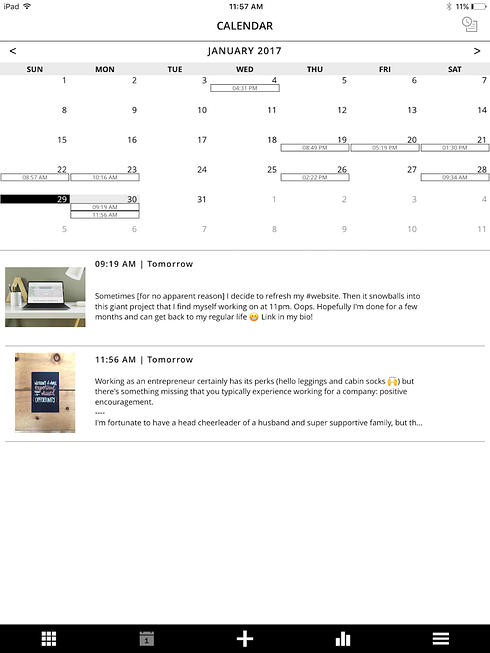Is Your Hashtag Strategy Generating You Any Business?
Social media can be a total pain to learn how to use strategically for your business. As soon as you think you've mastered one channel, algorithms change. Or a different platform becomes the one to use for marketing. But there's one thing that seems to be sticking around on multiple channels: hashtags. They started on Twitter, moved their way over to Instagram, and are slowly being embraced on Facebook, and Google+. So what does your hashtag strategy look like? There are a few different types of "hashtaggers":
- The ones that #CramWordsThatShouldBeSentencesIntoHashtags
- The lost in the noise hashtaggers that use overused ones like #selfie or #photography
- Those that simply have no idea how to use hashtags
 The way that Instagram's new algorithm works is that posts with more engagement will show higher in your follower's feeds. Less than 10% of your followers will organically see your posts. This is why sometimes you'll see posts that are not chronologically in order. You'll see a posts from 12 minutes ago then one posted 13 hours ago then one from 1 hour ago. There are a few ways to ensure your images are getting a high amount of engagement.
The way that Instagram's new algorithm works is that posts with more engagement will show higher in your follower's feeds. Less than 10% of your followers will organically see your posts. This is why sometimes you'll see posts that are not chronologically in order. You'll see a posts from 12 minutes ago then one posted 13 hours ago then one from 1 hour ago. There are a few ways to ensure your images are getting a high amount of engagement.
- Post valuable content that people can relate to and find helpful.
- Use hashtags to get those posts found!
So what does your hashtag strategy look like? Are you a 1, 2, or 3? Here's how to properly use hashtags to ensure you're engaging the right audience and turning your followers into customers.
Revenue-Driving Hashtags Should Be:
Popular, but not too popular.
Finding that sweet spot will depend on the particular hashtags you're choosing, but try to find ones where the last post using it was less than one day ago but not as recent as 5 seconds ago. When the hashtag is used throughout Instagram every few seconds, your post will likely get lost in the noise and won't attract any new followers.
Relevant.
There's nothing worse than strategically searching for a hashtag, hoping to find something in specific, only to come across "follow4follow" accounts. Make sure your hashtag is directly related to the photo and topic of your post.
Keyword rich.
Would someone search for your hashtag? Would they search for those terms in Google? Treat your hashtags like keywords. For example, someone looking for a personal trainer probably wouldn't search for #instafit on Instagram or Google.
Short and easy to read.
If you're also adding keywords to help tell readers and followers what your business is about, make sure they don't need to read it a few times to understand the hashtag. Keep it short and simple by capitalizing the first letter if there are multiple words. #KindOfLikeThis

Planoly Social Media Planning Tool
Create a hashtag that people can relate to and share it!
Think of a common pain point your target audience experiences. Turn it into a hashtag! For example a journal company might start an #OrganizationProbs hashtag. Or maybe you'd rather establish yourself in a community of likeminded entrepreneurs by starting a #JournalersUnite hashtag. Whichever you choose, create a graphic using a tool like Canva and share it on your Instagram! Tag fellow IGers you feel would love to join in on posting using the hashtag.
Quality over quantity.
Just because you're allowed to use up to 30 hashtags, doesn't mean you need to. Using the tips we've covered, you'll probably find that you don't need to use all 30 for each post. If you're just choosing ones at random to max out your capacity, you're probably bringing in the wrong audience.
Keep them separate.
You work hard to write engaging descriptions for your posts, so why clutter them with hashtags? Pepper in one or two if they flow with the sentence but put the rest of your hashtags in a comment. I personally create a notebook in my phone with a few lists of hashtags to use, depending on the topic of the post. A great tool you can use to plan out your hashtags before posting is Planoly.
Not sure which hashtags you should be using? Talk to a digital marketing expert to help you identify the revenue driving hashtags for your business and industry!



